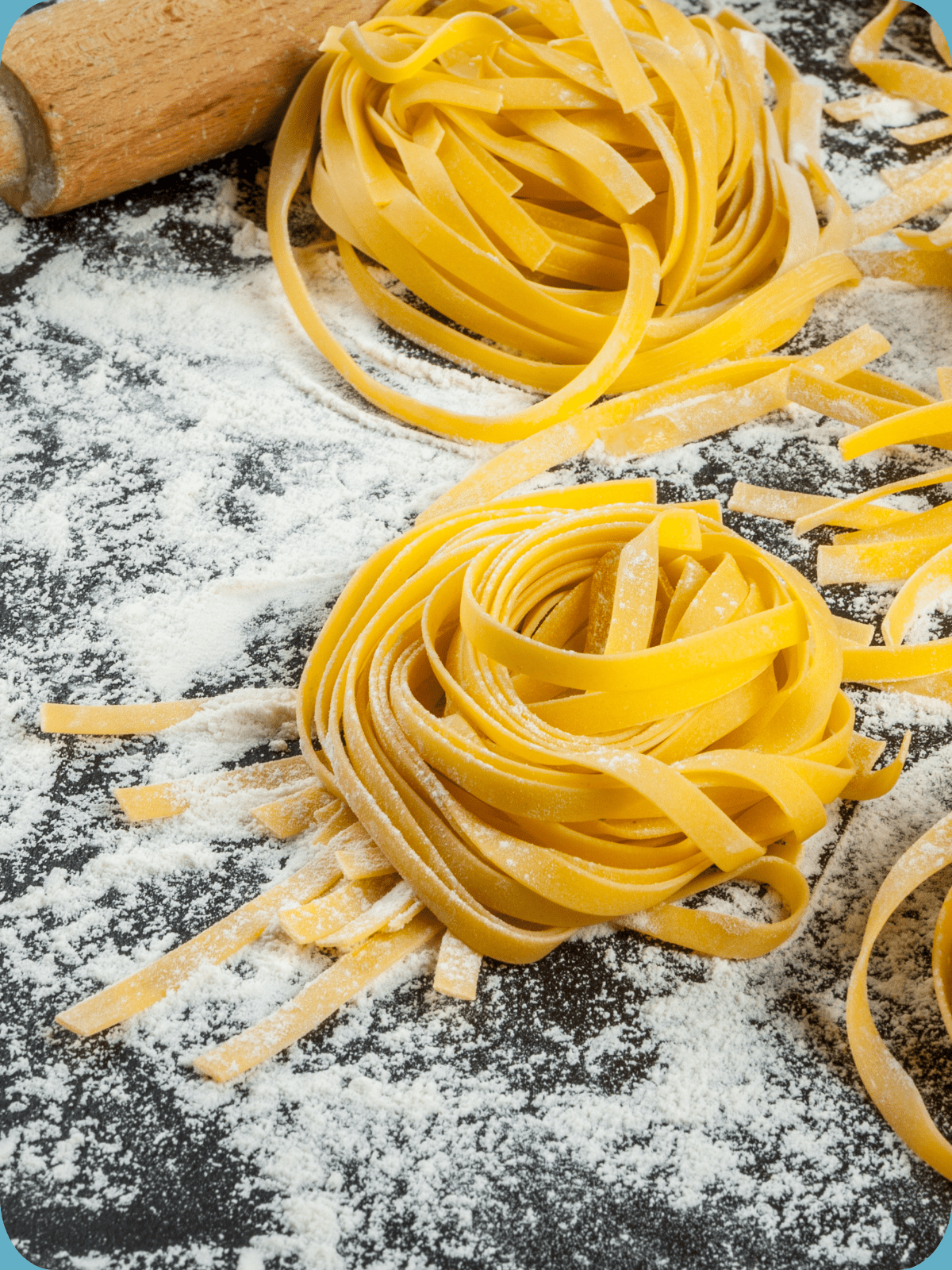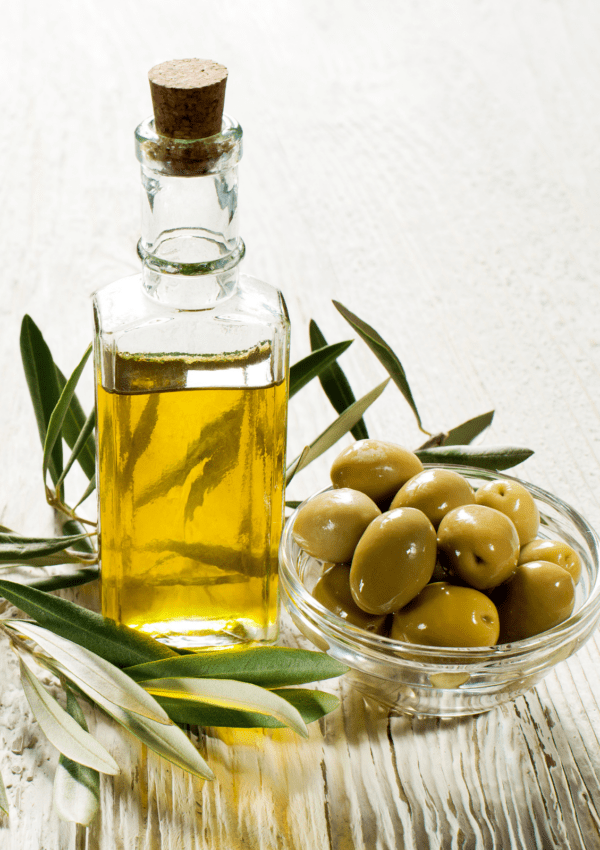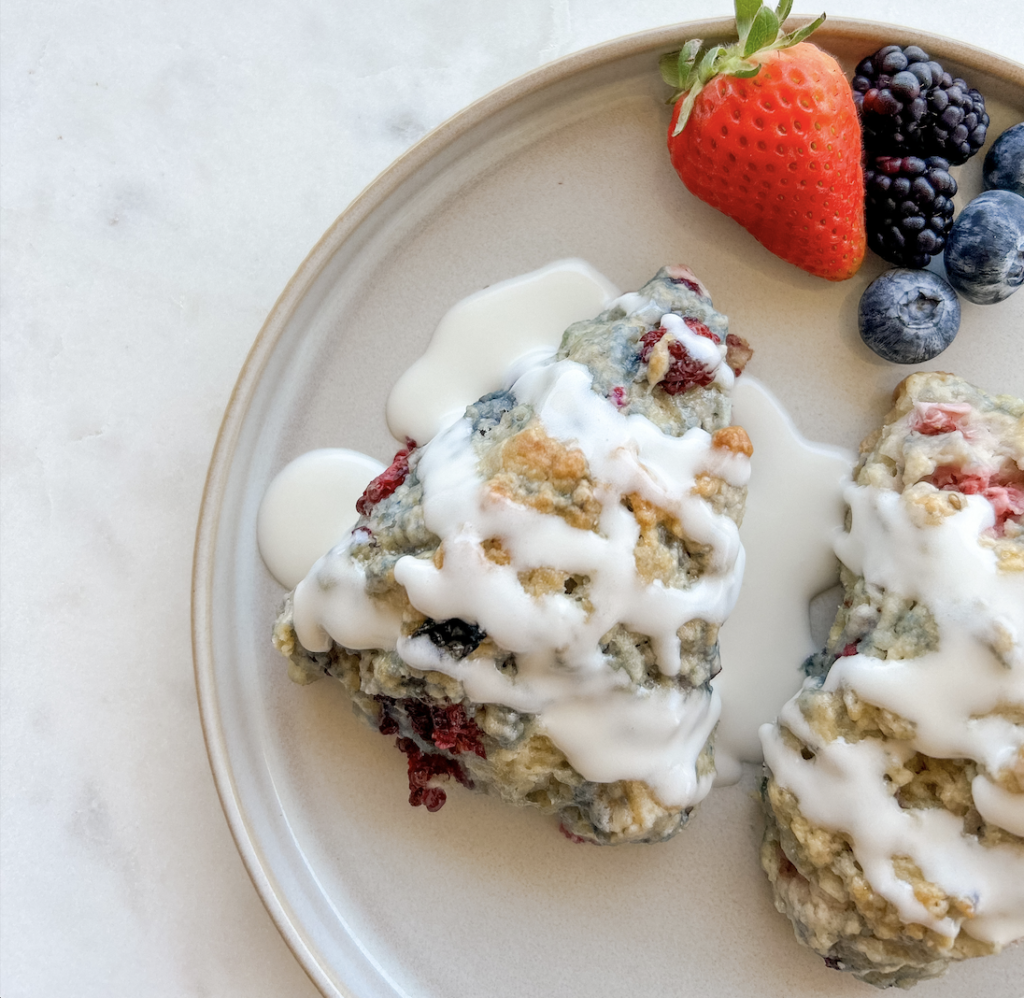Learn how to make homemade pasta without a machine using just two simple ingredients—flour and eggs. This guide covers everything from choosing the best flour to troubleshooting tips, step-by-step instructions, and optional equipment for pasta perfection.
This post contains affiliate links, which means I’ll receive a commission if you purchase through my link, at no extra cost to you. Please read the full disclosure here.
There’s nothing quite like the taste of homemade pasta. It’s fresh, tender, and miles ahead of anything you can buy in a box. And here’s the kicker: you don’t need a fancy pasta machine to make it! With just two simple ingredients, a rolling pin, and a little elbow grease, you can create pasta that’ll make Nonna proud.
P.S. While you are here, please check out my line of salt and sugar free, culturally inspired seasonings by clicking here. If you like pasta, you will LOVE my rustic Italian seasoning!
This post is all about homemade pasta without a machine.
Can Pasta Be Made Without a Pasta Machine?
Absolutely! While a pasta machine is handy, it’s not a dealbreaker. Homemade pasta has been made by hand for centuries. A rolling pin (or even a wine bottle in a pinch!) and a bit of patience are all you need. Sure, it might take a bit more effort to roll out your dough evenly, but the payoff? Totally worth it.
What Flour Is Best for Homemade Pasta?
The gold standard for pasta-making is “00” flour. This Italian-style flour is super fine and gives pasta a silky texture. If you can’t find it, don’t worry. All-purpose flour works well too, especially if you’re just starting out. Semolina or durum wheat flour is another excellent option, often used in combination with “00” or all-purpose flour for a bit of extra bite.
What is the difference between “00” FLOUR and DURUM WHEAT FLOUR?
“00” flour and durum wheat are not the same, but they are both used in pasta-making. “00” flour refers to how finely the flour is milled, with “00” being the finest grade. It’s made from soft wheat and produces a smooth, elastic dough, perfect for tender pasta like tagliatelle or ravioli.
Durum wheat, on the other hand, is a specific type of hard wheat. Its flour, often called semolina or durum wheat flour, has a coarser texture and higher protein content. This makes it ideal for pasta shapes that require more structure and a firmer bite, such as penne or orecchiette.
Italians often combine “00” flour and semolina to achieve the perfect balance of tenderness and bite in their pasta.
How Many Eggs for 2 Cups of Flour for Pasta?
The golden ratio is 1 egg per 100 grams of flour, which translates to about 1 egg for every cup of flour. So for 2 cups of flour, you’ll need 2 large eggs. Simple as that! If your dough feels too dry, add a splash of water or olive oil until it comes together.
What is the Egg-to-Flour Ratio For Homemade Pasta?
The standard egg-to-flour ratio for making pasta is 1 large egg for every 100 grams (about 3.5 ounces) of flour. This translates to roughly 1 large egg per cup of flour if you’re using cups as a measurement (though weights are more precise).
For example:
- 2 cups of flour = 2 large eggs
- 3 cups of flour = 3 large eggs
This ratio can vary slightly depending on factors like the size of the eggs, the type of flour, and the humidity. If your dough feels too dry, you can add a small splash of water or olive oil. If it feels too wet, sprinkle in more flour a little at a time.
Can I Use Plain Flour to Make Pasta?
Yes, you can! Plain flour (all-purpose flour) is versatile and works just fine for homemade pasta. While it may not have the silky finish of “00” flour, it’ll still give you delicious, workable dough.
What Kind of Flour Do Italians Use to Make Pasta?
Italians typically use “00” flour for pasta. This finely milled flour creates a smooth, tender dough that’s easy to work with and cooks beautifully. Semolina flour is also a staple in many Italian kitchens, adding texture and flavor to certain pasta shapes.
How Long to Cook Fresh Pasta?
Fresh pasta cooks in the blink of an eye compared to dried pasta. Depending on the thickness, it’ll take about 2-4 minutes. Keep a close eye on it and taste as you go. Fresh pasta is ready when it’s tender but still has a slight bite (al dente).
What Is the Function of Eggs in Pasta?
Eggs are the backbone of fresh pasta. They provide structure, richness, and flavor. The protein in the eggs helps the dough hold together and gives it elasticity, while the yolks add that golden hue and a touch of luxury.
Troubleshooting: Why Is My Homemade Pasta Dry?
Dry pasta dough usually means there’s not enough moisture. Here’s how to troubleshoot:
- Too Dry? Add water, a teaspoon at a time, until the dough holds together without crumbling.
- Too Sticky? Dust with flour and knead until it’s smooth and pliable.
- Cracking When Rolling? Let the dough rest longer. Resting allows the gluten to relax, making it easier to work with.
- Not Holding Its Shape? Make sure you’ve kneaded the dough enough—about 8-10 minutes of kneading should do it.
Equipment to Consider (If You Want to Get More Into Pasta-Making)
While you can start with just a rolling pin, here are a few tools to make the process even easier:
- Pasta Machine: Perfect for uniform thickness and quick rolling.
- Bench Scraper: Handy for cutting and transferring dough.
- Pasta Cutter or Wheel: For creating decorative edges on your pasta shapes.
- Drying Rack: Ideal for air-drying your pasta to store for later.
You May Also Like
If you liked this post, you may also be interested in:
OR click here to browse my entire kitchen tips category.

How To Make Homemade Pasta Step-By-Step (Without a Machine)
Ingredients
Method
- Make a Flour Well: On a clean surface, pile your flour into a mound and create a well in the center.
- Add Eggs: Crack the eggs into the well. Use a fork to beat them gently, gradually incorporating flour from the edges.
- Form the Dough: Once it starts to come together, use your hands to knead it into a ball.
- Knead: Knead for about 8-10 minutes until the dough is smooth and elastic.
- Rest: Wrap the dough in plastic wrap and let it rest for at least 30 minutes.
- Roll: Divide the dough into quarters. Roll each piece out as thinly as possible, adding a sprinkle of flour to prevent sticking.
- Cut: Use a sharp knife or pizza cutter to slice the dough into your desired pasta shape (e.g., fettuccine, tagliatelle, or pappardelle).
- Cook: Boil in salted water for 2-4 minutes, then toss with your favorite sauce.
A Final Word on Homemade Pasta
Making pasta from scratch is more than just cooking; it’s an experience. It’s about getting your hands messy, savoring the process, and feeling a deep connection to a time-honored tradition. Whether you’re a seasoned chef or a total newbie, this simple, two-ingredient recipe is your ticket to pasta nirvana.
This post was all about How To Make Homemade Pasta Without A Machine.
Ready to level up your cooking game? Try out these tips and let us know how it goes! Make sure to tag me @thespicegirlkitchen_ on Instagram or @thespicegirlkitchen on TikTok!
Want to learn more about Kelsey? Click here to read her story!







